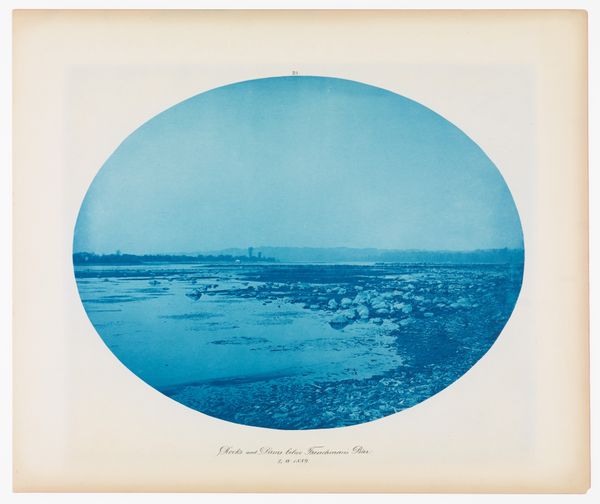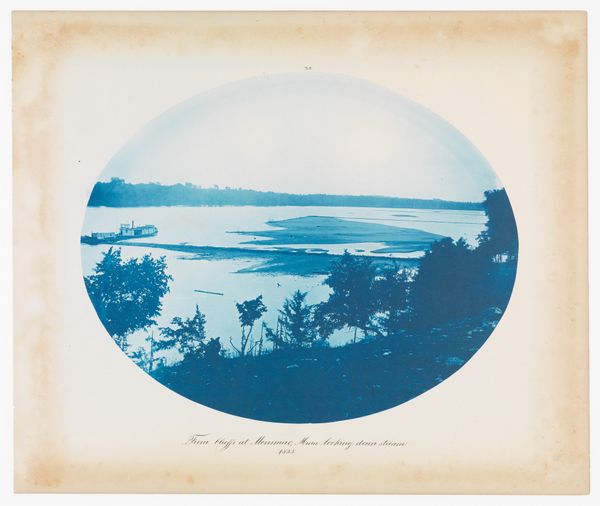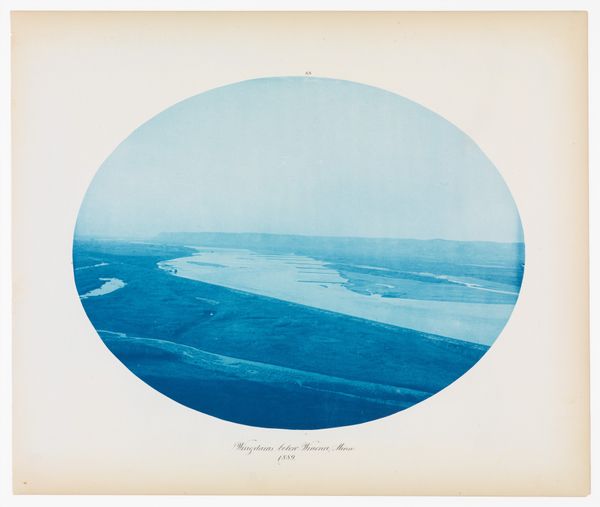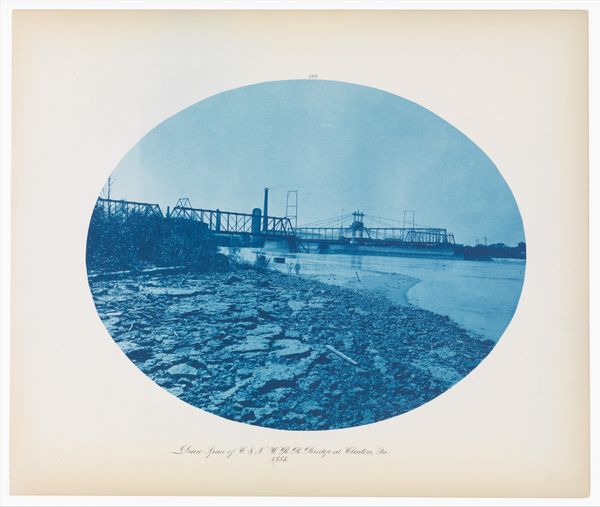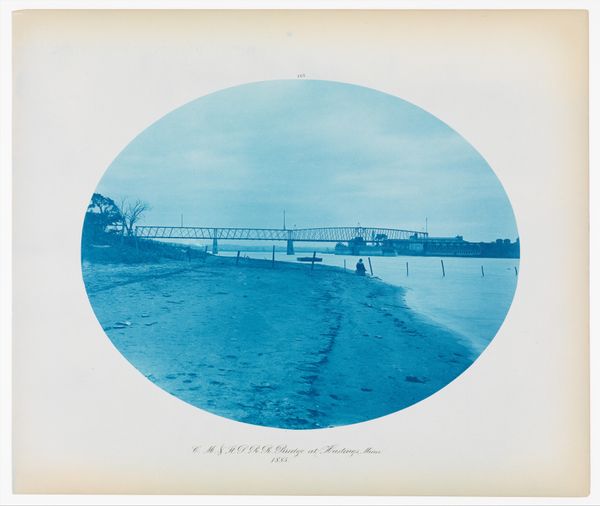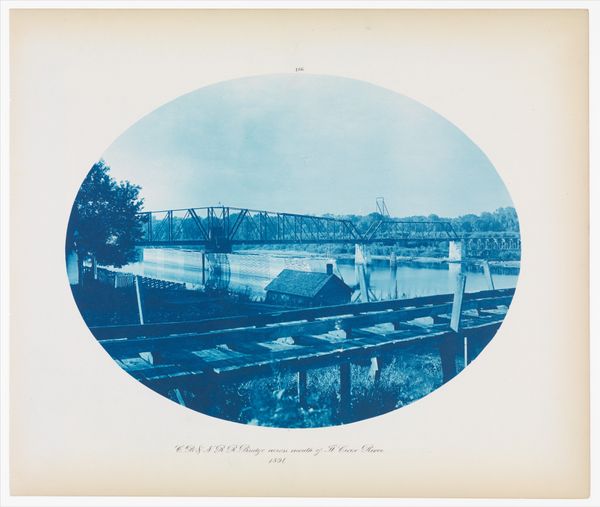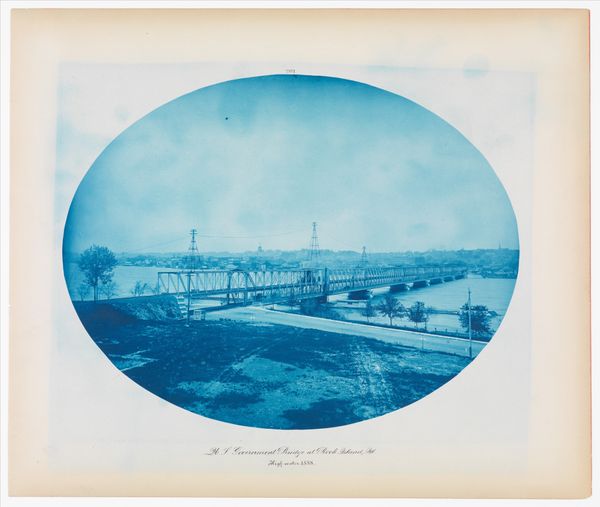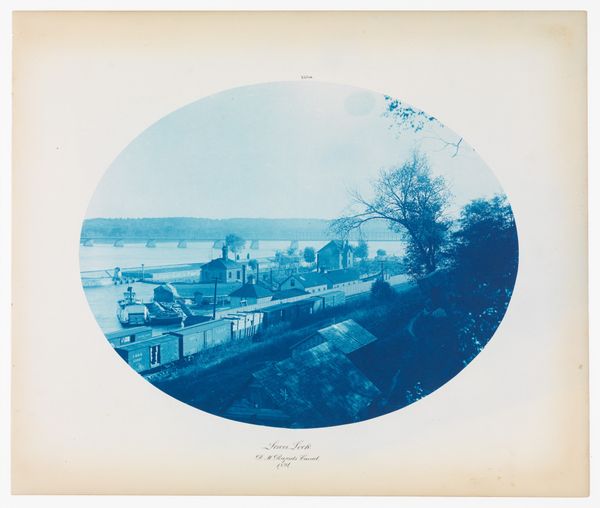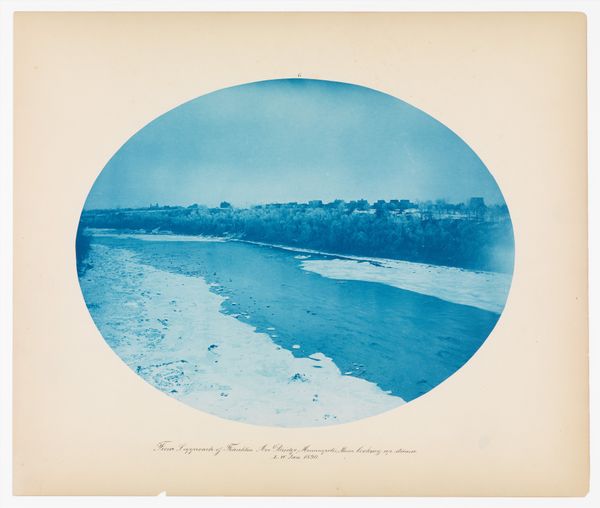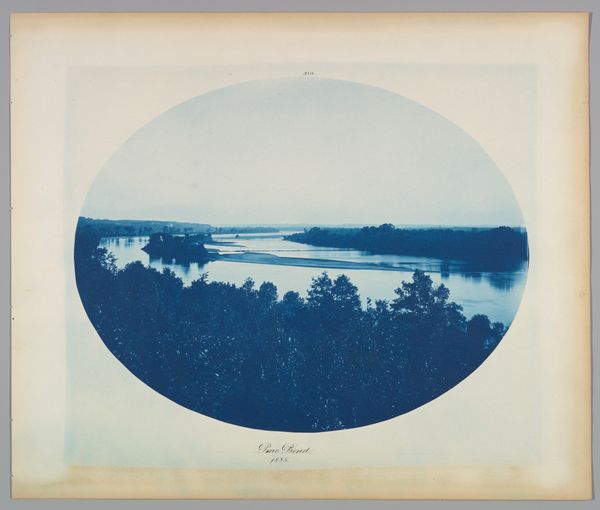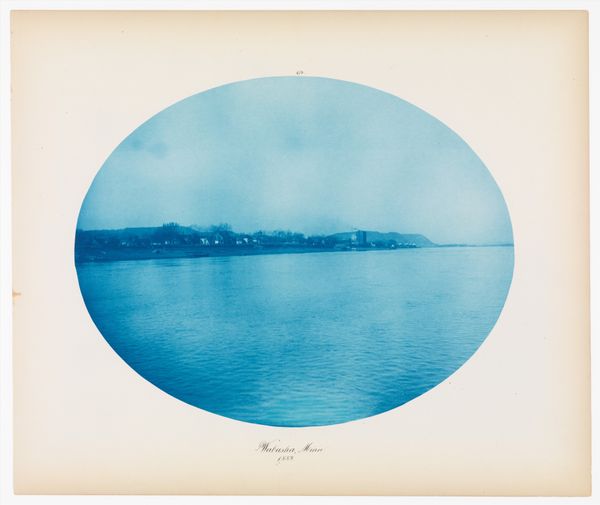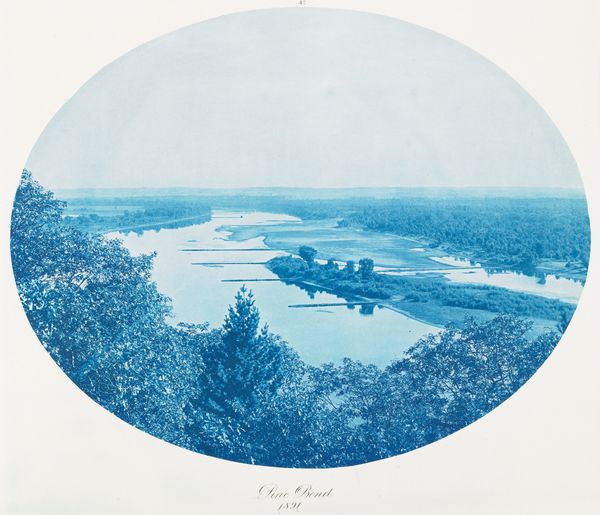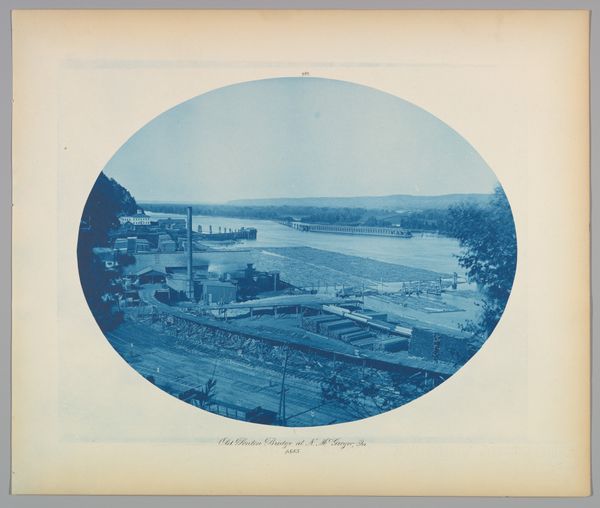
Chicago and North Western Railroad Bridge at Winona 1885
0:00
0:00
print, cyanotype, photography, albumen-print
# print
#
landscape
#
cyanotype
#
photography
#
coloured pencil
#
united-states
#
cityscape
#
albumen-print
#
realism
Dimensions: 10 3/8 x 13 1/8 in. (26.35 x 33.34 cm) (image, oval)14 7/16 x 17 3/16 in. (36.67 x 43.66 cm) (sheet)
Copyright: Public Domain
Curator: Here we have Henry P. Bosse's cyanotype, "Chicago and North Western Railroad Bridge at Winona," dating to 1885. Editor: Well, immediately, it's a dreamlike scene, almost aquatic. The monochrome blue lends a unifying, peaceful aura to the industrial subject matter. It softens the hard edges of the bridge. Curator: Cyanotypes, also known as blueprints, were often used for technical drawings. The very process speaks to a culture of industry and the precise visual language needed for engineering. It renders the image in this cool blue, a pigment formed through a chemical reaction to light and iron salts on paper. Editor: Yes, the bridge itself acts as a potent symbol here. It represents connection, progress, and the relentless march of industrialization across the American landscape. Look at how its intricate lattice echoes networks in the social fabric! There's almost a sense of fragility implied in the contrast between such complex support and what seems to be infinite water surrounding it. Curator: The choice of cyanotype, however, feels a little ironic to me. It elevates a technical, reproductive process typically associated with diagrams and architectural plans, granting it an aesthetic dimension within the artistic sphere. Note, also, that while mass-produced photographic prints became more commonplace, Bosse returned to the manual, more hands-on cyanotype method, revealing an engagement with photographic processes rooted in chemistry and material transformation. Editor: True. While there is that underlying tension in its process and meaning, notice the foreground detail - the carefully placed rocks seem almost intentionally composed, which lends itself to the sense of stability for this powerful industrial-age form, especially because a city looms softly behind it. In this image the railroad is the modern symbol of power for the Winona. I cannot help but feel how people wanted progress so bad that even photography could convey their need to show that and believe that feeling! Curator: It prompts us to consider how artistic practices and material processes shaped, and were shaped by, industry in the late 19th century. Editor: Absolutely. I hadn't really looked at it that way. Thanks for revealing the material side of things, considering how symbols interact in the space, while allowing an image of great nuance to speak in subtle but evocative terms. Curator: And for you providing the meaning from the symbolism. Both play off of one another beautifully.
Comments
No comments
Be the first to comment and join the conversation on the ultimate creative platform.
